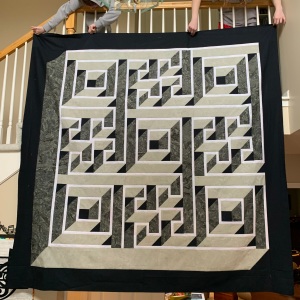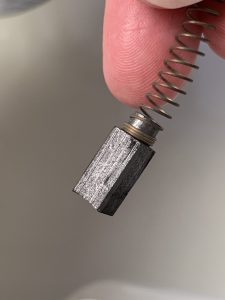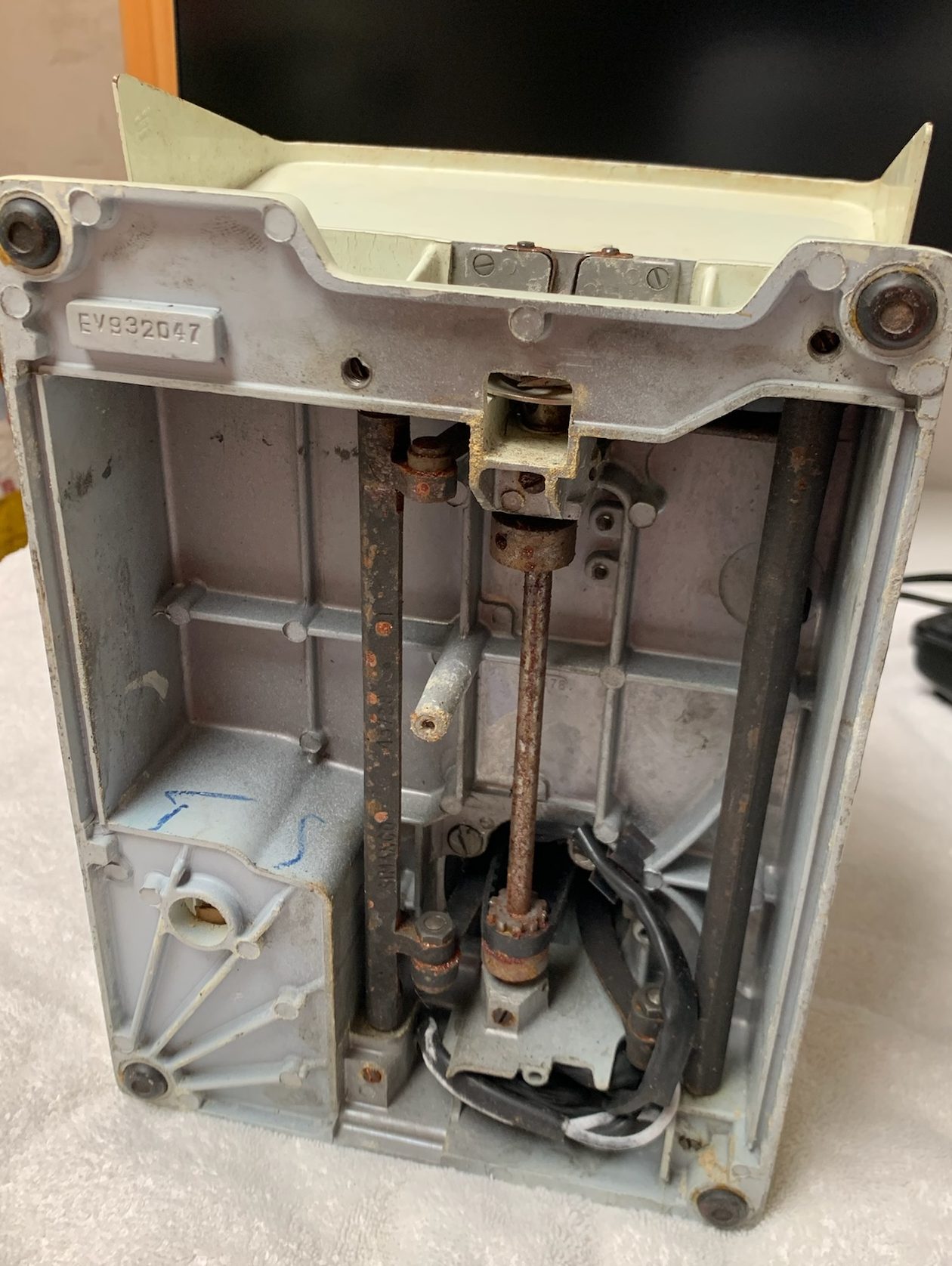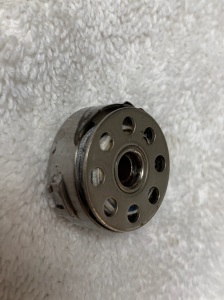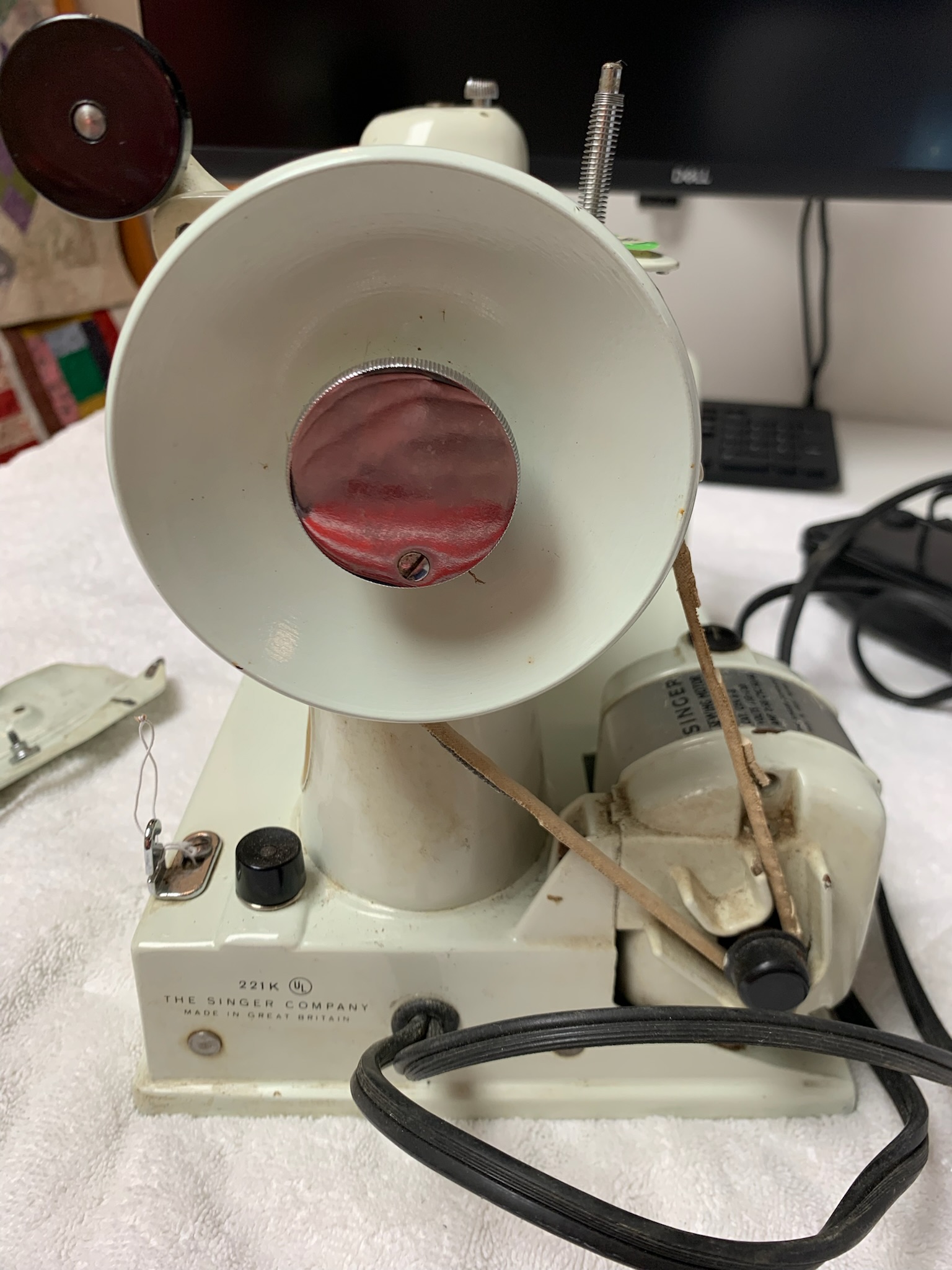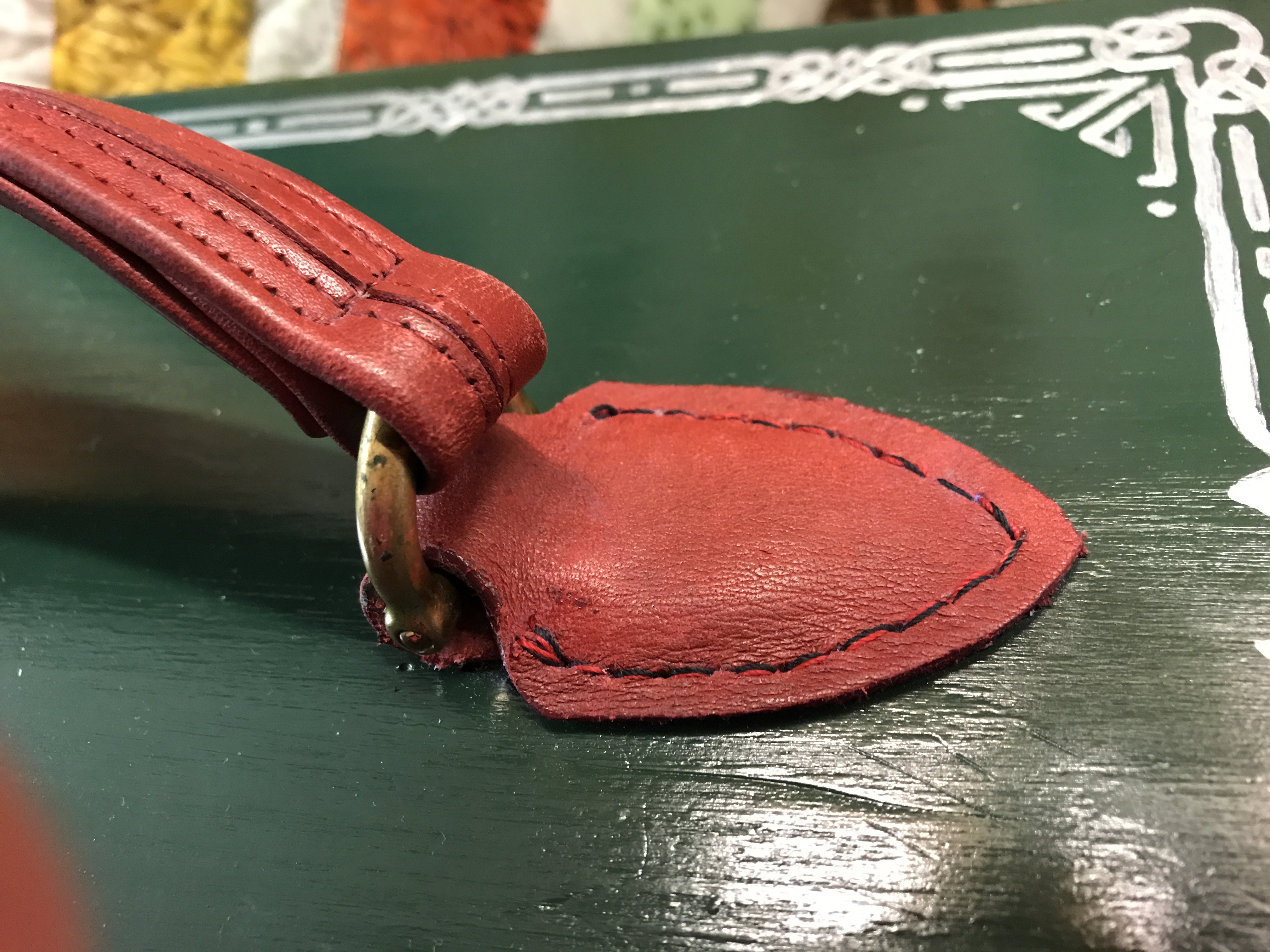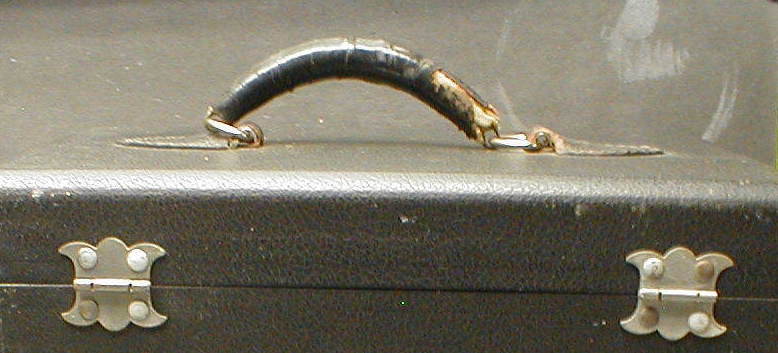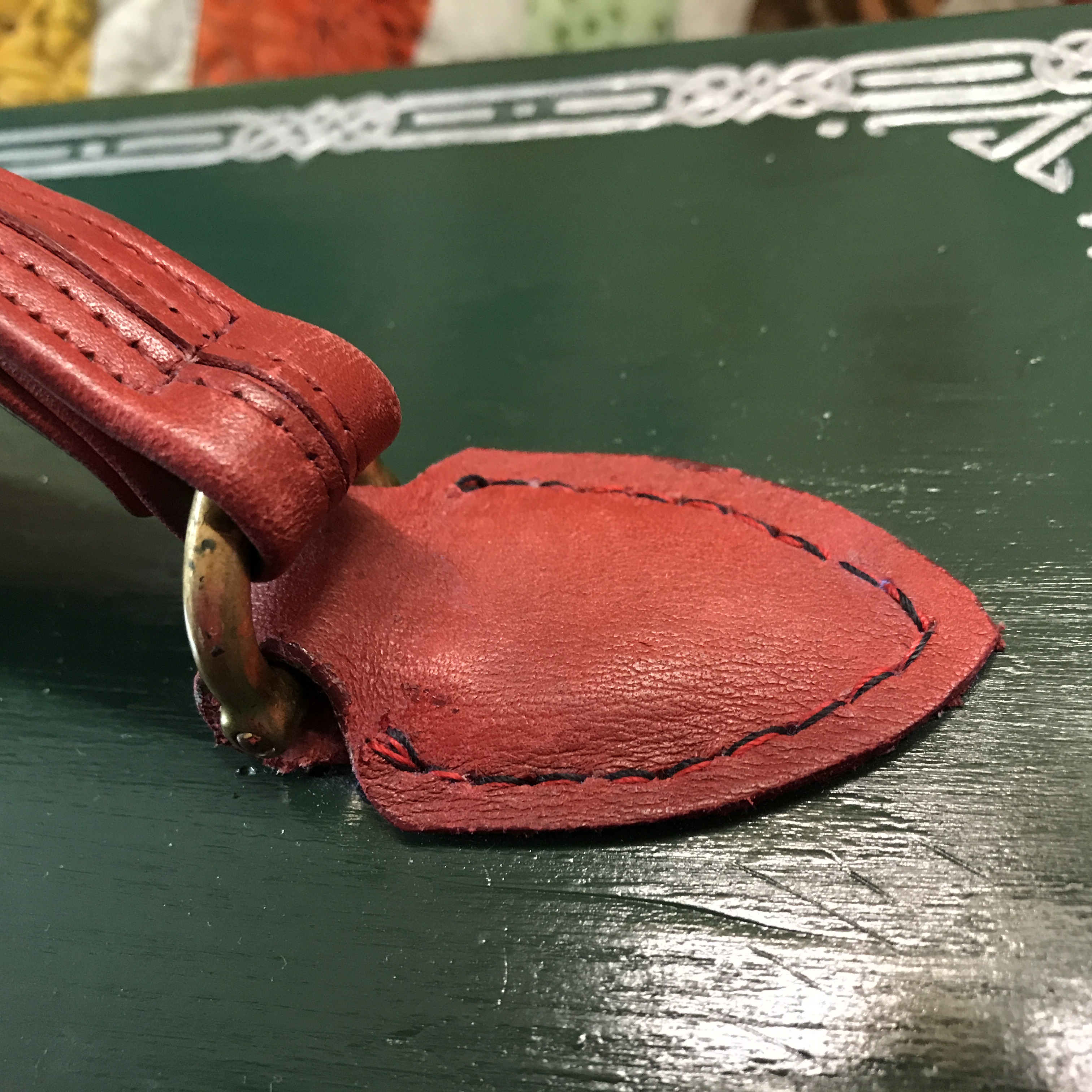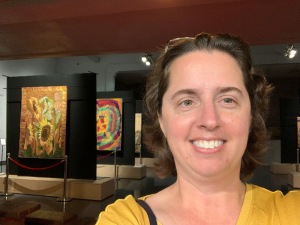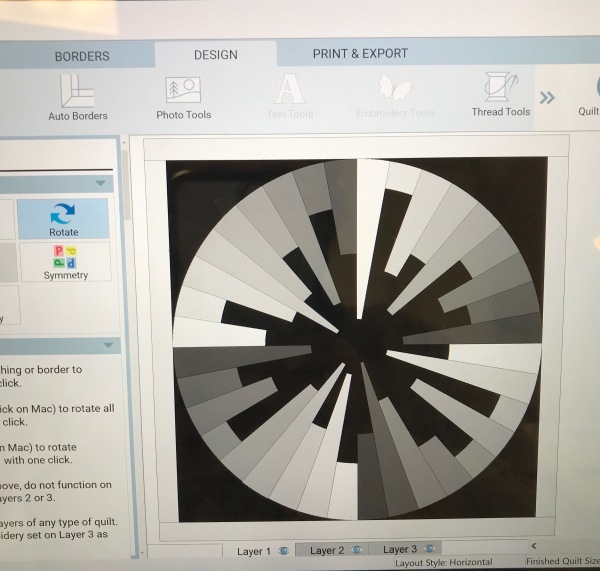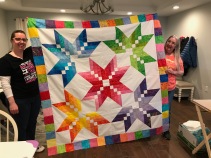Who’s your favorite uncle?
It isn’t often that you get a call, and you immediately know the caller wants something, BUT, that whatever they are going to ask of you might actually be fun, so you let them talk you into a “Yes”. In this case, I became immersed in my first full T-Shirt quilt that I have dubbed “Decades of Decibels”.


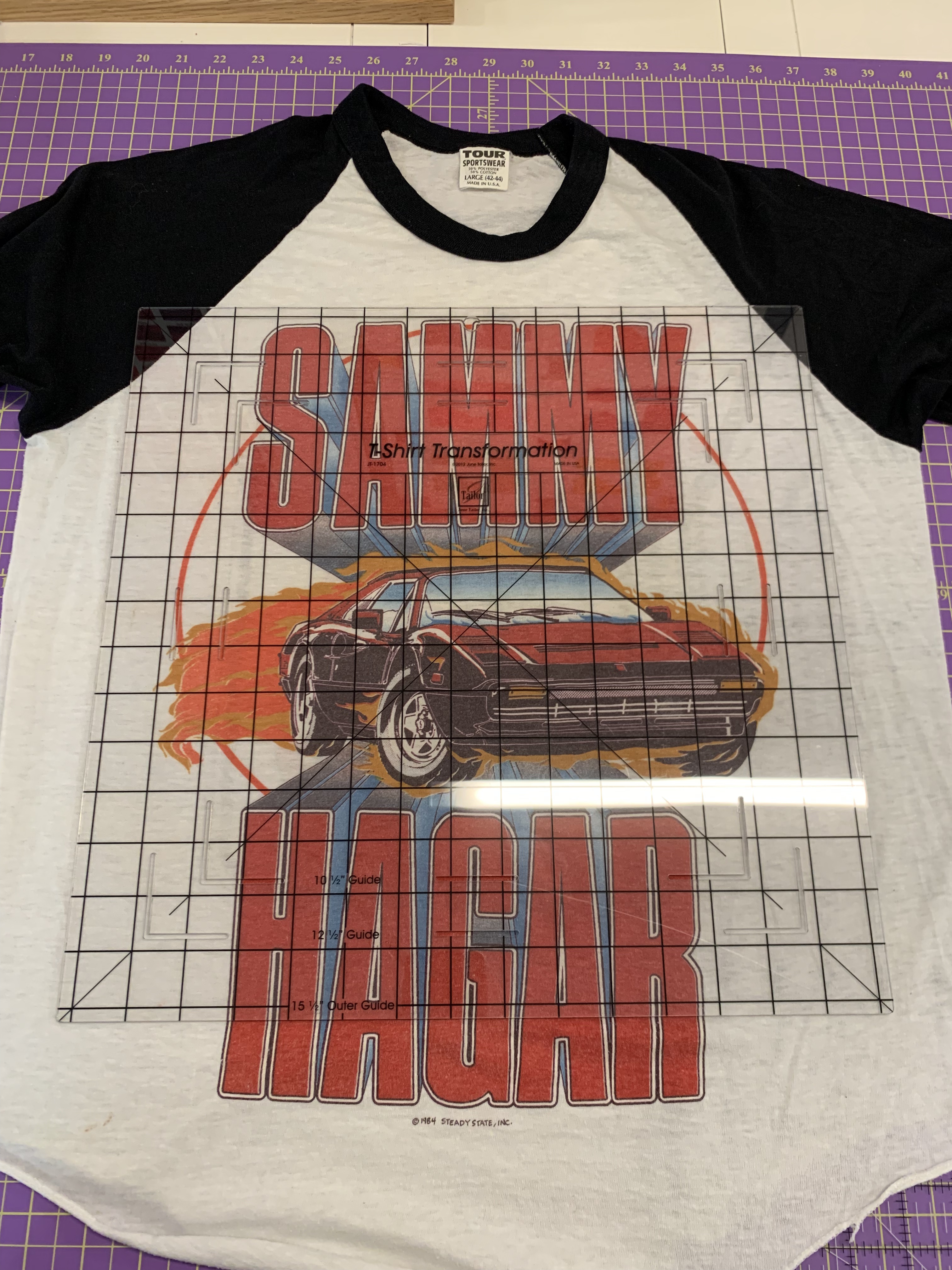

I can’t claim design inspiration on this one as my uncle knew what he wanted. He had taken time to inventory and visually lay out the shirts he had collected from rock concerts over the years and had curated 30 black and white tee’s from his collection. I think allowing me to slice into some of these took some gumption. It was a pretty hard task not to try to convince him to let me keep a few to wear!
The original ask was to cut 25 shirts into rectangles, where none of the images would get cut off. However, I convinced him that it might be better and allow more of the shirts to make the quilt if we cut the shirts down to squares. A presentation given by Chris Jacobs, a member of the Kansas City Modern Quilt Guild, suggested that you would be surprised that you don’t REALLY need to the whole picture to immediately get the full idea of the design and memory. (I wholly agree and have experimented with it on some of my son’s old super hero tees.) In my mind, going square is similar to album covers, a fitting combination for bands who had their hay days in the 1970’s, 80’s, and 90’s. This ruler from June Tailor, June Tailor – T-Shirt Transformation Ruler, was perfect for helping to size the shirts up. So that I didn’t cut off anything my uncle found important, I had him center the ruler on each shirt and take a picture that I could reference later in the process.
I also used the design software EQ8 to visualize the completed project for him and suggested adding some interest to the blocks by adding drop shadow borders to two edges of each block. This wasn’t the final product, but you get the idea. He opted to have the same color for the edging of each block instead of switching between black and white as I show here. His quilt is also a little bit bigger!!




Each shirt took approximately 15-20 minutes to prepare. I started with the smallest shirts first. As you might be able to see in the pictures at the top, a few of the smaller baseball-style shirts ended up with the sleeve color included in my 15″ square cut. Since we were going for a checkerboard effect, I cut off the secondary colored corners and supplemented the square with the correct background color from the leftover pieces of the shirt.
Each shirt received the following treatment:
- Using scissors/rotary cutter, separate the front of the shirt from the back and remove the sleeves and neck area.
NOTE: Don’t cut your T-Shirt down to size until AFTER stabilizing it! - Apply Pellon SF101 fusible interfacing to the backside of each t-shirt front that we wanted on the quilt.
Note: Pellon SF101 is available in both black and white. I used a Cricut EasyPress2. - Now, post-stabilizing, cut t-shirt front down to size using the 15″ square ruler.
- Modify/supplement block corners on a few of the shirts.
- Add borders to two edges of the block.
Checkered Album Quilt Specifications/Contents:
- 97 1/2″ W x 116 1/2″ L
- 30 T-shirts (5×6), interfaced with Pellon SF101 (Black or White depending on shirt color)
- Northcott Moda Wilmington Prints Timeless Treasures – Grunge Basics – Metropolis Iron (Shadows)
- Northcott Moda Wilmington Prints Timeless Treasures – Toscana – Grey Yardage (Sashing/Border)
- Quilters Dream bamboo batting
- Omni 2025 Thread, 40 wt
- Robert Kaufman – Warehouse District Wide Back – ANJXD-19798-2 Black
I love this edgy line of fabric designed by Leslie Tucker Jenison and have used it in several projects already! I think it was the perfect pairing for this quilt. - Straight line stipple edge-to-edge quilting, similar to Broken Glass by Deb Geissler
I’ll get better full pictures later when I get to make the final delivery to my “favorite” uncle. Who else would let their niece play games on their awesome computer and take them on rides in their snazzy car! It almost makes me forgive him for tormenting me like a big brother. 🙂 Cheers.



It isn’t the 1980’s anymore. When new albums come out, we have instant gratification from our streaming services. No more running out to the record store. No more sneaking in to get that cassette tape of the Damn Yankees that Mom and Dad certainly would not have approved of. Records, Tapes, CD’s? I don’t think my kids would even know how to use one.
Let’s see what AI has to say about this collection. I had ChatGPT create a poem from the first 5 bands on the quilt.
“In the land of dreams and wonder,
Where the sky and sea meet yonder,
The Moody Blues serenade the night,
With melodies soft and light.
In the mystical land, Kansas reigns,
With tales of love and loss and pains,
Their music echos through the hills,
A symphony that forever thrills.
Bad Company roars through the land,
With raw enery and power so grand,
Their rock and roll shakes the ground,
And leaves echoes that resound.
Emerson, Lake & Palmer take the stage,
With a musicality that’s all the rage,
Their fusion of sound and style,
Is a journey that goes for miles.
And last but not least, Rush takes flight,
With music that’s bold and full of might,
Their progressive rock leads us on,
To places beyond the horizon.
These bands of old,
Their music true,
Still resonates with me and you,
And we’ll keep on listening, day, and night,
To their magic, their power, their light.

Quilting Playlist: Curated from the bands represented on this quilt by the quilter, her “favorite uncles”, her dad, and some friends who may or may not have ever listened to some of these bands!
QR CODE FOR AN APPLE PLAYLIST
HAPPY QUILTING!




